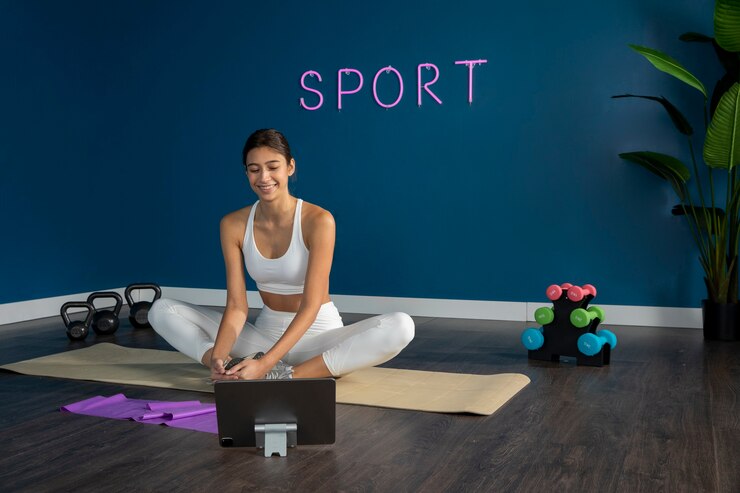
Running a boutique fitness studio requires owners to manage countless moving pieces. If you have staff, it's even more complicated. To ensure your studio's smooth and efficient operation, it's essential to establish clear guidelines and expectations for your employees. One helpful tool to create a staff culture of personal responsibility and efficacy is the creation of a comprehensive employee handbook.
Why Do You Need an Employee Handbook?
An employee handbook is a vital resource for both you as the owner and your employees. It serves several important functions:
1. A well-written handbook outlines your studio's policies, procedures, and expectations, which helps employees understand their roles more fully.
2. It can provide legal protection for your business by documenting your compliance with employment laws and regulations.
3. It promotes consistency in managing your studio by ensuring everyone is on the same page regarding policies and procedures.
4. The handbook can be used as a training tool for new employees, streamlining the onboarding process and making your job easier.
Digital or Paper? How to Choose the Right Format for Your Employee Handbook:
The format you choose for your employee handbook is nearly as important as its content. The decision to go digital or stick with a traditional paper format can impact how effectively your handbook is distributed, accessed, and updated. There isn't a right or wrong answer. Instead, consider how the following supports your studio's culture.
fitDEGREE can support your Studio Fitness
Digital Employee Handbook
Pros:
- Digital handbooks can be easily accessed by employees on their computers or phones, making it convenient for them to reference policies and procedures anytime, anywhere.
- Digital formats allow for effortless updates. When policies change, you can simply edit the document and distribute the latest version instantly.
- There are no printing or shipping costs associated with digital handbooks, saving you money in the long run.
- Going digital reduces paper waste, aligning with eco-friendly initiatives.
- Digital documents can be easily searched for specific topics or keywords, making it quicker for employees to find information.
Cons:
- Some employees may not be comfortable or proficient with digital tools, potentially making accessing the handbook challenging.
- Anything digital is easily shared. You'll need to ensure proper security measures are in place to protect confidential information.
- Physical handbooks may provide a more tangible resource that employees can hold, mark up, and keep as a reference.
Hybrid Approach:
A compromise between digital and paper formats is a hybrid method combining the two. You may provide a digital handbook as the primary source of information for easy updates and accessibility, but also offer printed copies for those who prefer or require them. This approach combines the advantages of both formats while catering to various employee preferences.
For example, you may create your handbook on Google Drive or Canva with clickable links and print it as a desk copy for employees to reference quickly while working.
Ultimately, the choice between a digital or paper employee handbook will depend on the unique needs and preferences of your boutique studio and employees. Whichever format you choose, the key is to ensure that your manual is readily available, up-to-date, and effectively communicates your studio's policies and expectations to your valued team members.
Creating Your Employee Handbook:
1. Start with an Introduction
Begin your handbook with a warm "welcome to the team" and an introduction to your studio's mission, values, and culture. This sets the tone for what employees can expect from your business.
2. Outline Studio Policies:
Clearly articulate your studio's policies on dress code, attendance, punctuality, music selection, and customer service standards. The more precise you are, the less room for ambiguity later, so take your time to brainstorm all the policies you want to include. Consider creating a note on your phone to jot down ideas as you go about your daily studio operations, so you don't forget something important.
3. Explain Job Duties:
Define the roles and responsibilities of each position in your studio so employees understand how their specific job expectations relate and contribute to the studio's success. A clear contribution explanation is crucial for long-term job satisfaction and retention if you employ Millennial and Gen Z staff.
4. Safety Protocols:
Detail safety procedures, including emergency protocols, injury reporting, and any other emergencies or natural disasters your studio could experience. You do not want your staff to panic about what to do the first time the fire alarm goes off with a class full of clients, so train your staff in emergency protocols in addition to including them in the handbook. Consider adding a lost key clause here. As a studio owner, my most common "emergency" is that the instructor forgot or lost their key.
5. Compensation and Benefits:
Explain employee compensation, including wages, pay schedules, and any applicable benefits such as health insurance, retirement plans, or fitness perks. If your staff each receive a different rate, you can include a broad description of the bonus structure and remind them to reference their contract.
6. Time Off and Leave Policies:
Outline your studio's policies regarding vacation, sick leave, sub requests, holidays, and other forms of time off. Explain how employees should request time off and the approval process if you have one. Subs are one of the most common studio owner complaints, so if you don't have a staff protocol for time off, it's an excellent time to create one.
7. Code of Conduct:
Describe expected behavior with coworkers and clients. Address issues like harassment, discrimination, and ethical guidelines to ensure compliance with state and local requirements.
8. Communication Guidelines:
Establish clear procedures for communication within the studio. This could include rules for using company email, phone etiquette, social media policies around friending and interacting with clients and handling customer inquiries. If you do not want to be glued to your phone or fielding calls at five in the morning, detail who they should contact instead of you and office hours for when to call, text, or email you.
9. Training and Development:
Explain how employees can access studio training and professional development opportunities. If you have a resource for proper execution of exercises or lesson plans, include a link to those.
10. Acknowledgment and Signature:
Conclude the handbook with a section where employees acknowledge that they have read, understood, and agreed to the policies and guidelines presented in the guide. Their signature serves as proof of receipt and agreement.
Updating Your Handbook:
A handbook is not a static document; it should evolve with your studio's growth and changes in employment laws or industry standards. Plan to review and update your handbook regularly and communicate changes to your employees promptly.
The handbook is often forgotten or left for later since many daily operations are vying for a studio owner's time. However, a robust employee handbook is crucial in establishing and maintaining a solid foundation for your boutique fitness studio. It not only helps maintain a harmonious work environment, but it also protects your business legally. By providing clear expectations and guidelines, you set your employees up for success, ultimately contributing to the overall reputation of your studio.













.jpg)












.jpg)










.jpg)









































.jpg)





























